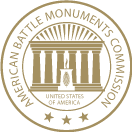The Southwest branch of the National Archives provides access to documents—such as letters, photographs, architectural drawings, and maps—which originated from federal agencies and courts. Documents on the premises date from the 1800s to late 1900s; and were created in Arkansas, Texas, Oklahoma, and Louisiana.
Areas of collection emphasis include Native American removal, westward expansion, Chinese exclusion, segregation, repatriation, the World Wars, economic history, oil, the Civil War, slavery, and the U.S. space program.
Groups and classes are welcome to visit—with advance notice—for activities such as research, tours, internships, exhibit viewing, lectures, learning to teach history with primary sources, and genealogy workshops.
Just for Students and Educators
Educators may be interested in available professional development workshops on archival holdings and using primary sources. If the workshop does not take place at the archives, travel expenses may require payment.
You may also want to check the main page for links to the latest annual K-12 education newsletters.
If you are looking for a way to bring the archives into your classroom, rather than taking your class to Fort Worth, several digital options are available. For one, you could make use of student activities, such as an examination of historical U.S. census documents. You can also explore lesson plans on the domestic slave trade or illegal Chinese immigration, created by teachers; or you can even submit you own, inspired by the archives' sources. Finally, you might consider scheduling a roughly hour-long distance learning program. Available topics vary, but all programs are document-based and provided free of charge.
Interested in art? Looking for more lesson plans? Consider taking some time to explore Art and Archives. . .
Interested in art? Looking for more lesson plans? Consider taking some time to explore Art and Archives, a collaboration between the Southwest branch of the National Archives and the Sid Richardson Museum. The website defines primary and secondary sources, offers art and archival vocabulary lists, and contains a collection of lesson plans which utilize art to think about history. Topics include Lewis and Clark, westward expansion, the Louisiana Purchase, cowboys, Wounded Knee, and black soldiers in the Civil War. These lesson plans are generally for middle and high school students. However, a version of the Louisiana Purchase lesson plan is listed for grade five.
